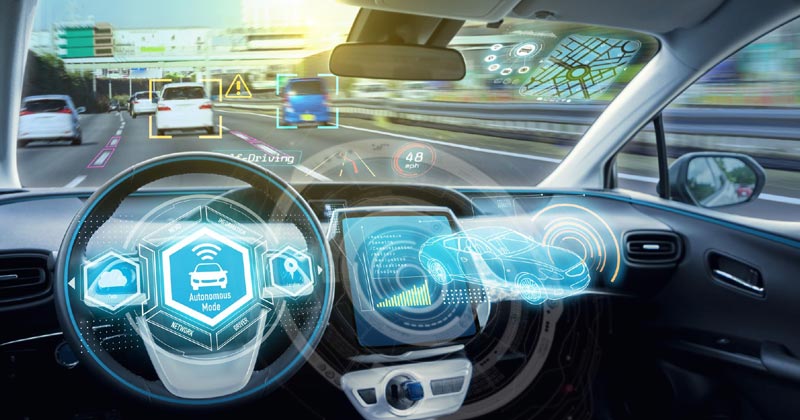Surfing Facebook, reading emails, or ordering clothes while driving a car will soon be a reality, according to Google. The internet giant is pushing ahead with the development of self-driving cars at great expense. Here is Everything you need to know about Self-drive cars.
Indian commuters spend an average of ten hours a week in the car. Wouldn’t it be wonderful to spend this time chatting, e-shopping, or talking on the phone? Self-driving cars could make this possible.
The first autonomous car drove exactly 50 meters in Japan in 1977. Since then, it has undergone intensive development until Google’s breakthrough in 2011 when the internet giant announced that Google’s test fleet had traveled more than 1,600 kilometers this year. By the end of 2013, the test cars under the flagship ‘Google’s self-driving car project’ had already driven over half a million kilometers.
The concept – How do driverless cars or Self-drive cars work?

As the name suggests, the Google Driverless Car should do without a driver. It should drive fully automated and safer than a human. There is technology in an autonomous car worth $ 150,000. These include various radar systems on the front and rear bumpers, a camera behind the windshield, various measuring devices on the wheels, a GPS receiver and an inertial navigation system. The INS is a 3-D measuring system that determines the spatial movement of the vehicle and the resulting geographic position. The GPS and the INS communicate constantly with each other to control the position of the vehicle and to measure the driving speed effectively.
Lightwave measuring system enables significantly sharper images
By far the most expensive and probably the most important measuring system is the light detection and ranging system, also known as the LiDAR. The LiDAR system is a method of distance and speed measurement that allows the intelligent car to create a detailed 3D map of the surroundings. In contrast to conventional systems, such as the radar, the LiDAR process uses laser rays, i.e. light waves, instead of radio waves. If the emitted laser pulses hit objects like other vehicles, they scatter back and the sensor detects them. Based on the running time of the light and the speed, the device can measure the distance to the object and manage the driving speed.
The advantage of this light wave measuring system is the better resolution, which creates a much sharper image. However, it is currently very expensive and will not work at night or in fog. So, it seems like it will probably be a mix of radar and LiDAR. That would be the most effective and the best in terms of price.
What are the hurdles with Driverless cars?

Before an autonomous car can hit the market, manufacturers have to overcome a few hurdles. There are some problems we have to overcome before the self-drive cars can hit the road.
Legal
The traffic rules must be revised at the end of last year to make room for automated cars. In European countries, self-driving systems are permitted as long as the driver can stop them at any time. However, these rules still need to be translated into national laws.
Technology
The technology has to be completely reliable. There can be no system failure or errors. The installed system must be able to protect the driver and everyone else on the road.
Efficient Functionality
If the technology should fail, the car must ensure a completely safe transfer of controls between the driver and the system.
Socially
Right now, 90 percent of accidents are due to human error. More technical aids in the car could lower the accident rate. But should an accident or damage occur due to technical reasons, it must be socially clarified who pays for costs and liability.
Acceptance
A self-driving car means giving decision-making power to a computer. For the autonomously driving cars to be successful, there must be a friendly attitude towards technology in society. The users have to trust the technology.
Infrastructure and Migration

The car has to be integrated into traffic. It has to be clarified whether there will be separate tracks for the autonomous cars and how the vehicles react in mixed traffic. Finally, it has to be clarified whether the road infrastructure has to change.
How safe is technology from hackers?
Advanced technology that deals with data and data streams are susceptible to interference. A major problem is an attack from outside, as BMW recently learned. In February, a security expert attempted to hack BMW’s ConnectedDrive and was successful in just a few minutes proving that the vehicle could be hacked from the outside in minutes with a single code through the mobile phone without leaving any traces.
The risk of an attack can never be completely ruled out, but all manufacturers try to minimize this potential hazard. BMW said that they have now closed the gap by encrypting the communication with the vehicle.
Also Read – Tesla’s New Wonder Battery is Said to Cover 1.6 Million Kilometers
When can you switch to a driverless car?
The Guardian newspaper published an article in 2015 stating that around 10 million self-driving cars will be on road by 2020. However, it’s 2020 now and we don’t see any driverless cars. Have the companies given up or was it just over-expectation? In reality, it is much harder to build a perfect AI for self-drive cars. Upon that, no company wants to risk anything for after the launch. The AI training has to be the toughest for it to withstand the real-time driving conditions. Hence, expecting the cars to be launched without the best AI, would be equivalent to asking the car to crash into us. Whatever be the case, Google doesn’t seem to be rushing into things to bring a technically shy product into the market.


